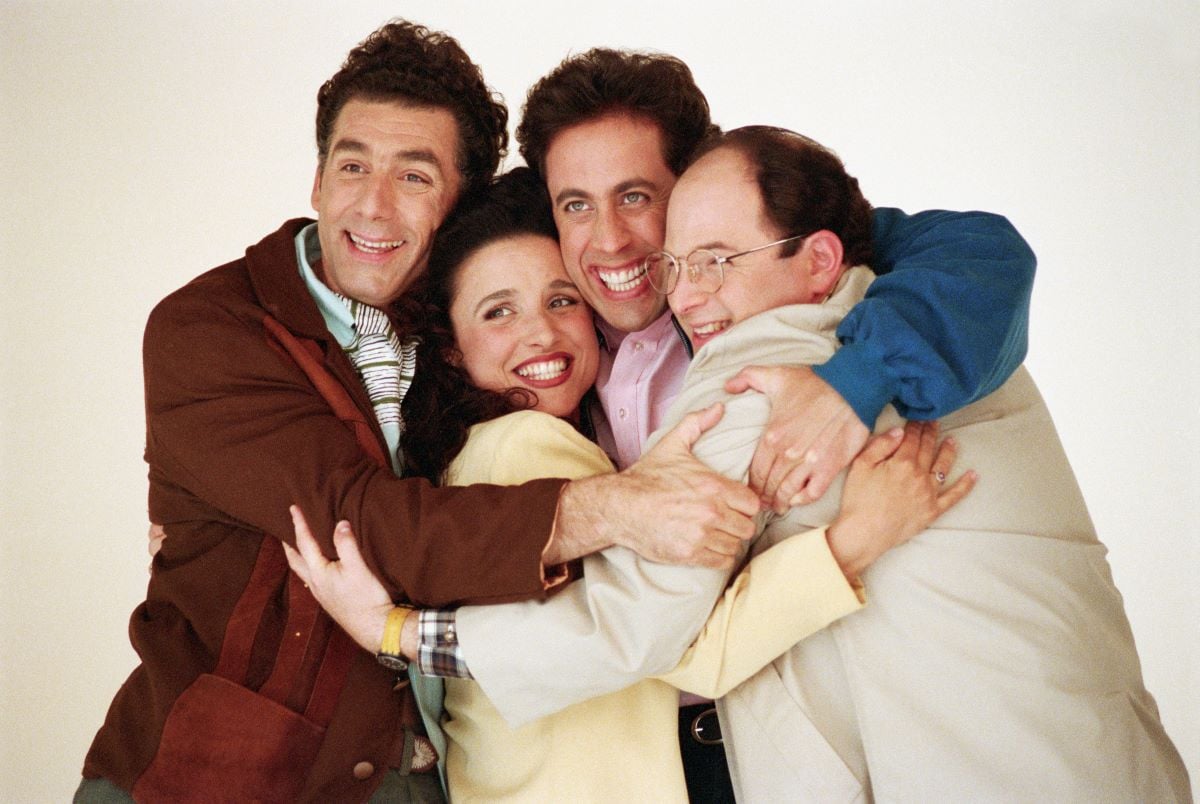‘Seinfeld’ Doesn’t Have a Traditional Christmas Episode, But They Have a Bizarre Festivus for the Rest of Us
Most sitcoms put a lot of time and care into creating holiday-themed episodes each December. These can be silly or cheesy, memorable or forgettable, but no matter what they’re filled with festive cheer. The one glaring exception to this rule is the forever cynical writers of Seinfeld.
Instead of having Jerry, George, Elaine, and Kramer assemble for an ugly sweater party or buy each other gag gifts for Christmas (or Hanukkah), Seinfeld gave us a completely fictional holiday called Festivus. It was a classically irreverent move, and in the end, the perfect choice for Seinfeld.
Festivus is a non-traditional holiday celebration on ‘Seinfeld’

The concept of Festivus originated on the Dec. 18, 1997 episode of Seinfeld called “The Strike.” It’s not meant to complement Christmas, but rather makes a comment on commercialization of it. The whole event comes courtesy of George Costanza’s dad Frank (Jerry Stiller) who invented the holiday after an unfortunate shopping incident one Christmas.
According to NY Post, Festivus “includes forgoing a Christmas tree for an ‘unadorned aluminum pole’ — which is decoration-free ‘mainly because tinsel is too distracting,’ according to Frank.” The event is celebrated annually on Dec. 23.
The faux holiday features an “airing of grievances” during mealtime, when family members describe how everyone has disappointed them all year long. In the Constanza household, Festivus also included a “feats of strength” wrestling match between Frank and George.
The fictional holiday is based on real life
Like so many other storylines on Seinfeld, the concept of Festivus was based on true events from the lives of the production crew. Seinfeld writer Dan O’Keefe’s father Dan Sr. came up with a “Festivus for the rest of us” in the 1960s, NY Post reported.
When O’Keefe’s brother brought it up at a party, Seinfeld producers found the concept too bizarre to put on television. But the eponymous actor and show co-creator Jerry Seinfeld thought it fit with the show’s overall concept. As usual, his instincts were correct. Fans immediately latched onto Festivus after seeing that first episode.
Even years later, Festivus is still a popular holiday
Seinfeld’s Festivus isn’t a real holiday — it’s more of an anti-holiday. But that hasn’t stopped fans from celebrating it all along by posting funny videos and buying merchandise to commemorate the fictional event. Seinfeld addicts can purchase Festivus sweaters, ornaments, stickers, and games on Amazon or even stage their own events, such as Airing of Grievances, at home.
And mainstream figures from state governors to professional sports teams have all gotten in on the fun. Pittsburgh even hosts an annual public Festivus festival every year.
Festivus may be a parody of real holidays, but it perfectly captures some of the negative feelings that come up during the holiday season and helps inspire people to laugh a little. It’s non-religious, all-inclusive, inane, silly, and memorable. No wonder this fake holiday from a Seinfeld episode has such staying power even more than two decades later.


